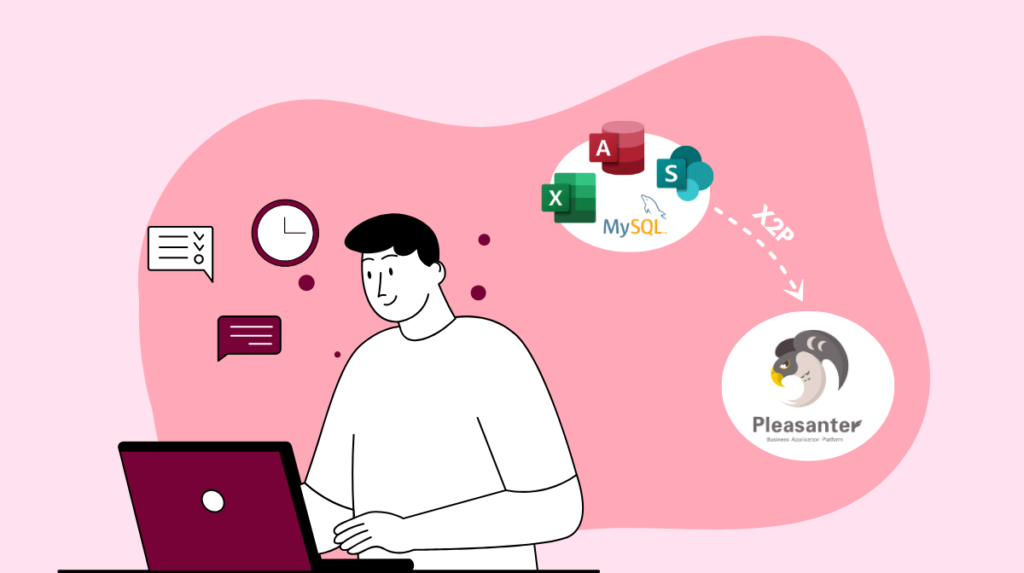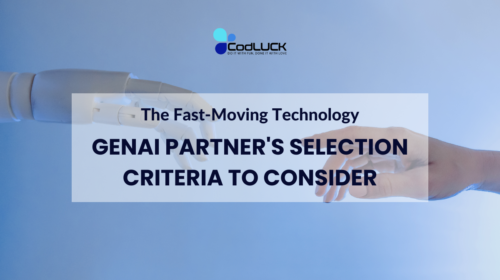Data migration isn’t just about moving files, it’s about upgrading how your business works. In 2025, with more data, more platforms, and tighter deadlines, the right migration tool can save you time, money, and a lot of headaches.
This list covers the top 10 tools that help businesses migrate fast, minimize errors, and modernize with confidence. Let’s dive in!
Here’s the list of the best data migration tools to consider in 2025:
- X2P Migration
- Astera
- Fivetran
- Integrate.io
- Matillion
- Stitch
- Hevo Data
- Talend
- Snaplogic
Why Data Migration Is Still a Major Challenge?
Despite all the progress in cloud computing and automation, data migration remains a risky, time-consuming process for many businesses. Why?

1. Legacy systems are deeply embedded
Many companies still rely on old tools like Excel, Access, or outdated SQL servers. These systems aren’t built for today’s web-based, scalable environments – making migration harder than a simple copy-paste.
2. Downtime can cost real money
Even a few hours of disruption can affect customer experience, operations, and sales. Many tools still require scheduled downtime or have limited rollback options.
3. Data integrity is fragile
Mismatched formats, missing records, or broken relationships between tables can lead to serious errors after migration, especially when dealing with large or unstructured data sets.
4. Technical resources are limited
Not every company has a team of database engineers. Businesses need tools that are not only powerful but also user-friendly for non-technical staff.
5. One-size-fits-all tools don’t work
Most enterprise solutions are expensive and overly complex for small and mid-sized businesses. Meanwhile, lightweight tools often lack the flexibility or security that larger systems require.
Top 10 Data Migration Tools for 2025
Choosing the right tool depends on your infrastructure, technical skills, and how critical your data is. Here are 10 standout tools in 2025: each solving a different kind of migration challenge.
1. X2P (Microsoft Access, Excel, SharePoint, and MySQL Server to Pleasanter)
X2P is a specialized migration tool built to help businesses transition from legacy systems like Excel, Access, SharePoint, and MySQL Server to Pleasanter – a modern, browser-based database platform. As many companies struggle with outdated tools, scattered data, or reduced Microsoft Access support, X2P offers a streamlined way to modernize without starting over or disrupting daily operations.
Best for: Businesses undergoing digital transformation and moving off Excel, Access, SharePoint, or MySQL; Businesses stuck with legacy tools looking for a smooth, low-risk path toward digital transformation with Pleasanter.
Key Features:
- Legacy-to-Web Migration: Move data from Excel, Access, SharePoint, or MySQL to Pleasanter without code or rebuilding from zero. As Microsoft phases out key Access functionalities and data gets increasingly fragmented, the risk of data loss, inefficiency, and operational bottlenecks grows.
- Zero Downtime: Migrate while your current systems stay live – no business interruption.
- No-Code Interface: Simple for business users, with dev-level customization when needed.
- Optimized for Pleasanter: Ensures full compatibility, clean structure, and minimal post-migration work.
- SMB-Friendly Pricing: Lightweight and affordable for small and mid-sized companies.
If you’re planning to modernize business workflows with Pleasanter, X2P is a direct, cost-effective way to get there, without rebuilding your data from scratch.
2. Astera
Astera is an enterprise-ready, end-to-end data integration and migration platform that helps businesses move data from diverse sources (like databases, data warehouses, and cloud apps) into modern systems. With a visual interface and robust transformation features, it streamlines complex data workflows for large-scale enterprise needs.
Best for: Enterprises that need a powerful, end-to-end data migration and integration platform with strong data transformation and quality features.
Key Features:
- Supports native integration with Snowflake, Redshift, SQL Server, Amazon S3, and other major platforms.
- Drag-and-drop data mapping with intuitive point-and-click navigation—ideal for non-developers.
- Includes profiling, cleansing, rule-based validation, and job scheduling for efficient, accurate migrations.
3. AWS Database Migration Service (DMS)
AWS Database Migration Service (DMS) is a fully managed service that makes it easy to migrate databases to AWS. It supports a wide range of source and target databases, including Oracle, SQL Server, PostgreSQL, MySQL, MongoDB, and Amazon Redshift. You can use DMS to migrate data incrementally or in full load mode. It also supports continuous data replication to keep data in sync between two databases.
Best for: Organizations migrating databases to AWS with minimal setup and need for real-time replication.
Key features:
- Schema conversion: Auto-converts source schema to match the target database.
- In-flight data transformation: Modify or clean data during migration.
- Monitoring tools: Track migration progress and detect errors in real time.
4. IBM InfoSphere
IBM InfoSphere Information Server is a comprehensive data management platform designed for data migration, integration, quality, and governance. It supports both cloud and on-premises environments and offers a user-friendly interface for building ETL/ELT pipelines, making it accessible for both technical and non-technical users.
Best for: Enterprises handling large-scale, complex data environments needing end-to-end data governance, high performance, and real-time replication.
Key features:
- Data Replication: Supports real-time and batch synchronization across systems.
- High Performance: Uses Massively Parallel Processing (MPP) to scale with large data volumes.
- Data Quality Management: Offers tools for cleansing, profiling, validation, and enrichment.
5. Fivetran
Fivetran is a cloud-based ELT tool that automates data movement from SaaS apps to data warehouses using pre-built connectors like Salesforce, Redshift, and Google Analytics. It streamlines extraction and loading for fast, reliable migrations.
Best for: Companies looking for a hands-off, reliable solution to sync data continuously across cloud apps and databases, especially for analytics use cases.
Key Features:
- Pre-built connectors: 300+ connectors for apps like Salesforce, Google Ads, PostgreSQL, and more.
- Fully managed pipelines: No maintenance needed, schema changes are auto-handled.
- Real-time sync: Keep data in sync for live dashboards and BI tools.
6. Informatica Cloud Data Integration
Informatica Cloud Data Integration is a cloud-based Integration Platform as a Service (iPaaS) that enables organizations to efficiently load, transform, and integrate data from various sources to target systems. It offers a comprehensive suite of tools for managing data integration projects, including creating mappings, tasks, and taskflows, all within a user-friendly interface.
Best for: Organizations seeking a scalable, cloud-based solution to integrate data across diverse environments, including on-premises and cloud systems, with minimal coding and robust administrative controls.
Key Features:
- Comprehensive Data Integration: Manage data integration projects by creating and running mappings, tasks, and taskflows to define data flow from sources to targets.
- Extensive Connectivity: Utilize a wide range of connectors to integrate data from various sources, including databases, applications, and cloud services.
- Robust Monitoring and Administration: Access tools for user management, privilege configuration, and task monitoring to ensure secure and efficient operations.
7. Azure Migrate
Azure Migrate is Microsoft’s unified platform for assessing and migrating on-premises or multi-cloud workloads to Microsoft Azure. It streamlines the entire migration lifecycle: from discovery and assessment to migration and modernization.
Best for: Organizations moving to Microsoft Azure that need end-to-end support for infrastructure, application, and database migration.
Key features:
- Workload Assessment: Built-in tools for discovery and readiness analysis.
- Workload-Specific Migration: Supports VMs, databases (SQL Server), web apps, and more.
- Large Data Transfer: Includes tools like Azure Data Box for bulk migration.
8. Hevo Data
Hevo Data is a no-code, cloud-based data pipeline platform designed for real-time ETL, ELT, and Reverse ETL processes. It enables businesses to migrate and sync data from various sources to modern data warehouses like Redshift, BigQuery, and Snowflake without any maintenance overhead.
Best for: Data teams looking for a simple, secure, and scalable way to unify data across multiple systems without writing code.
Key features:
- Plug-and-Play Connectors: Pre-built integrations with popular databases and SaaS apps, including CDC and REST API support.
- Codeless Pipelines: Intuitive UI for building data flows without IT dependency.
- Data Compliance: Meets enterprise-grade security standards (HIPAA, GDPR, CCPA, SOC2).
9. IRI NextForm
IRI NextForm is a flexible data migration and transformation tool that helps modernize legacy data formats and move structured data across databases and file systems. It supports various file types (CSV, fixed-width, Unicode, etc.) and integrates with major databases like Oracle and Teradata.
Best for: Organizations with legacy file systems or diverse data formats looking to modernize and migrate data without major system overhauls.
Key features:
- Format Conversion: Transform outdated file formats for modern compatibility.
- Database Replication: Move and mirrors database tables across environments.
- Data Reuse: Enable use of existing data without full system rebuilds.
10. Stitch
Stitch is a cloud-native, open-source ETL tool built for quickly moving data from multiple sources to data warehouses. It offers robust orchestration, replication, and monitoring features, making data pipelines more transparent and manageable for data teams.
Best for: Companies that need a lightweight, scalable ETL solution for syncing data from diverse sources into modern cloud data warehouses.
Key features:
- Broad Connectivity: Connect to SaaS apps, databases, APIs, and cloud storage.
- Flexible Replication: Support both real-time and scheduled syncs.
- Data Quality Tools: Include built-in validation and cleansing features.
Stitch, now part of the Talend family, offers a freemium tier, making it a great starting point for teams building their data stack on a budget.
Why X2P Stands Out for Modern Data Migration Needs
While many data migration tools in 2025 focus on large-scale enterprise migrations or cloud-native systems, few are tailored for the real-world challenges of businesses still using Excel, Access, or legacy MySQL servers. That’s where X2P shines.
1. Built for legacy-to-web transformation

Most traditional tools overlook a huge segment of users – companies still relying on local Excel spreadsheets, Access databases, or old MySQL setups. X2P is purpose-built to migrate from legacy systems into Pleasanter, a modern, web-based business database platform. This makes it ideal for SMEs and non-technical teams undergoing database modernization.
2. Zero-downtime, structured migration
Unlike generic solutions that require system shutdowns or manual rework, X2P enables automated data migration with schema mapping, relationship retention, and file attachment transfer, all while keeping the original system running. For growing businesses, zero-downtime migration isn’t a luxury (it’s a necessity).
3. No-code friendly, developer-ready
X2P supports both business users and technical teams. Non-technical staff can migrate data via a user-friendly interface while IT teams can review and customize field mapping and transformation logic. This hybrid approach is rare among typical cloud data migration software.
4. Optimized for Pleasanter – but adaptable
Though designed to work seamlessly with Pleasanter, X2P is flexible enough to support migrations into other web-based databases or low-code platforms, depending on future roadmap changes. It bridges the gap between Excel to web database workflows without the need for custom scripts or consultants.
5. Cost-effective for SMBs
Compared to large-scale enterprise migration tools that come with high setup costs and learning curves, X2P is lightweight, affordable, and pay-per-migration, making it especially attractive for small and medium-sized businesses (SMBs) looking to digitize without overspending.

Use X2P If You:
- Need to migrate data from legacy system to a modern web database
- Want to avoid downtime or data loss during transition
- Are seeking a no-code migration tool that’s still customizable
- Are implementing or scaling Pleasanter across departments
Conclusion: Start Your Migration Right
In 2025, the pressure to modernize your business systems is higher than ever but the migration process doesn’t have to be painful. Choosing the right tool can mean the difference between weeks of delays and a smooth, efficient transition.
If you’re planning to move from Excel, Access, or MySQL Server to Pleasanter, X2P offers a fast, reliable, and user-friendly solution tailored for that exact journey.
Ready to migrate with confidence?
- Book a free consultation with our experts
- Download the X2P brochure for a full feature breakdown
- Request a demo to see how X2P fits your real data
Contact us today and take the first step toward a more modern, scalable system.


